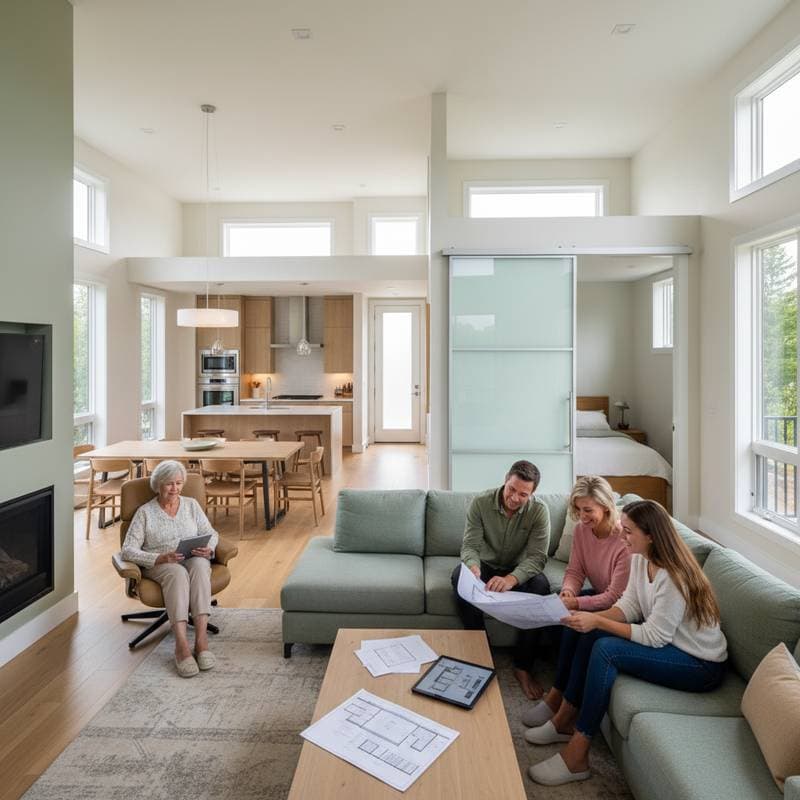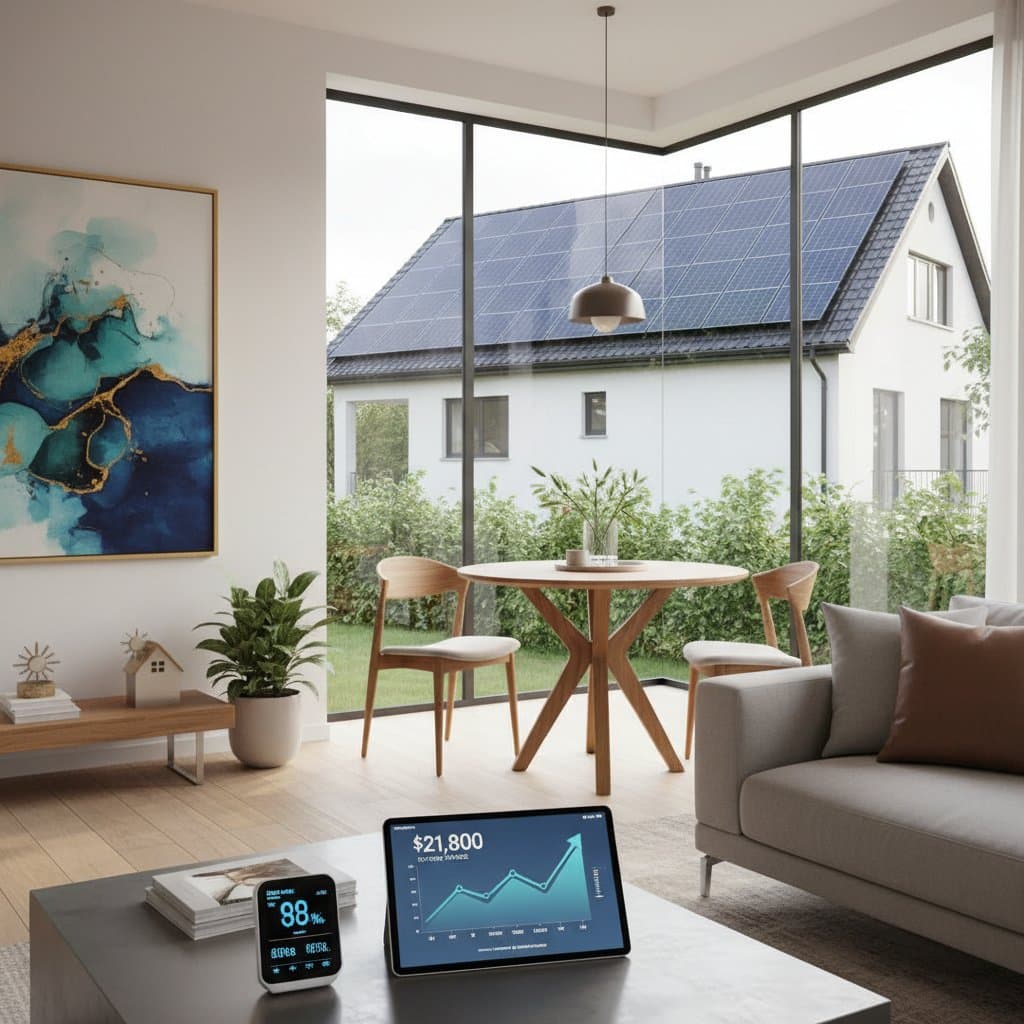2025 Multigenerational Remodel Cost Breakdown
Homeowners increasingly seek to accommodate aging parents, returning adult children, or extended family under one roof. A multigenerational remodel creates separate living areas that balance independence with family closeness. Key considerations include layout options, accessibility features, privacy measures, and adherence to building codes. This guide details realistic costs, project timelines, and essential safety elements for converting or expanding space into a functional multigenerational home.
Benefits, Drawbacks, and Ideal Applications
Multigenerational living offers distinct advantages for families planning long-term arrangements.
Benefits
- Fosters family bonds by keeping generations nearby without sacrificing personal space.
- Boosts home equity through compliant additions that appeal to future buyers.
- Provides potential for supplemental income if the space qualifies as a rental unit.
Drawbacks
- Involves navigating permits, rigorous inspections, and possible zoning adjustments.
- Upgrades to plumbing or electrical systems often reveal underlying issues requiring extra investment.
- Alters the home's flow in ways that might limit broad market appeal during resale.
Ideal applications
- Properties with ample yard space for rear or side-yard additions.
- Ranch-style houses featuring underutilized garages, basements, or attics.
- Households committed to multi-year occupancy with defined caregiving or support needs.
Detailed Remodel Process
Begin every project with thorough planning to avoid disruptions and ensure compliance. The sequence prioritizes safety and efficiency from initial sketches to final walkthrough.
- Initial concept and design phase: Outline required square footage, room configurations, and elements like private entrances or soundproofing. This stage typically spans 2 to 4 weeks and involves sketching basic floor plans.
- Engineering assessments and permit acquisition: Develop detailed blueprints for structural integrity, wiring, and piping. Approval processes from local authorities usually take 3 to 6 weeks, depending on jurisdiction.
- Demolition and structural framing: Clear existing partitions, excavate for new foundations if expanding, and erect framing. Coordinate with weather to prevent delays in outdoor work.
- Systems rough-in installation: Lay out plumbing lines, electrical conduits, heating and cooling ducts, and insulation materials. Conduct mandatory inspections prior to enclosing any work behind walls.
- Interior and exterior finishing: Apply drywall, install resilient flooring, add trim work, mount cabinetry, and fit fixtures. Select durable options suited to high-traffic family use.
- Final inspections and certification: Secure clearance from building officials to obtain an occupancy permit, essential for legal habitation or leasing.
Projects of this nature generally require 3 to 8 months from start to completion, influenced by the remodel's scale, material availability, and seasonal factors.
Common Pitfalls and Prevention Strategies
Even experienced renovators encounter setbacks in multigenerational projects. Addressing these early preserves budgets and timelines.
- Overlooking preliminary design consultations: This results in inspection failures and expensive rework; engage an architect familiar with accessibility standards upfront.
- Failing to evaluate utility infrastructure: Aging electrical panels or narrow water mains cannot support increased demand; conduct a professional load calculation before proceeding.
- Neglecting proper water management: Basement transformations risk water intrusion without adequate grading, French drains, or sump pumps; consult a drainage specialist.
- Inconsistently blending amateur and professional efforts: All electrical and plumbing tasks fall under unified permits; incomplete DIY attempts trigger code violations.
- Opting for budget materials: Inferior vinyl or particleboard deteriorates quickly in shared homes; invest in mid-range composites for longevity.
Guidelines for Professional Versus Self-Managed Work
Assess your capabilities using a structured evaluation to allocate tasks effectively. This approach minimizes risks while controlling expenses.
- Match tasks to expertise levels: Handle straightforward elements like painting or trim installation yourself if experienced. Reserve complex jobs such as wiring or foundation pouring for certified specialists.
- Prioritize safety thresholds: Delegate any involvement of natural gas lines, overhead electrical runs, or weight-bearing modifications to avoid hazards and liability.
- Consider equipment needs: Rent or purchase specialized gear like jackhammers for demolition only if feasible; otherwise, subcontract to equipped teams.
Suitable for self-management
- Surface-level finishes including wall painting, laminate flooring, and basic shelving assembly.
- Partition walls that do not support structural loads.
Best handled by professionals
- Concrete foundations, roof integrations, full bathroom rough-ins, and main electrical service enhancements.
Errors in restricted areas may invalidate homeowner insurance policies and postpone move-in dates indefinitely.
Cost Ranges for 2025 Multigenerational Remodels
Budgeting accurately requires factoring in regional labor rates, material inflation, and project specifics. National averages for 2025 reflect a 4 to 6 percent rise from prior years due to supply chain adjustments and demand for aging-in-place features.
- Basement or attic conversion (400-800 sq ft): $50,000 to $120,000. Includes egress windows for safety, moisture barriers, and basic kitchenette setups. Egress compliance adds $5,000 to $10,000.
- Garage transformation into in-law suite: $40,000 to $90,000. Focuses on insulation upgrades, separate HVAC zoning, and ADA-compliant bathrooms. Zoning checks may incur $1,000 in fees.
- Detached accessory dwelling unit (ADU, 500-1,000 sq ft): $150,000 to $300,000. Encompasses site preparation, full utilities extension, and landscaping integration. Prefab options reduce costs by 20 percent.
- Whole-home accessibility retrofit: $20,000 to $60,000. Covers ramp installations, widened doorways, and grab bar reinforcements without major additions.
Labor constitutes 40 to 60 percent of totals, with materials like energy-efficient windows or low-VOC paints influencing the upper end. Secure multiple bids and include 10 to 15 percent contingency for surprises.
Preparation Checklist
| Category | Details |
|---|---|
| Essential tools | Tape measure, spirit level, circular saw, power drill, personal protective equipment, extension ladders |
| Core skills | Basic framing techniques, introductory electrical awareness, finish carpentry proficiency |
| Safety equipment | Work gloves, safety goggles, dust masks, ear plugs |
| Required permits | General building permit, separate electrical and plumbing approvals, potential zoning exceptions |
| Preliminary actions | Site evacuation, boundary setback verification, underground utility mapping |
| Environmental factors | Schedule foundation pours during dry periods; protect against wind for elevated framing |
Bid Comparison Framework
Use this table to evaluate contractor proposals side by side, focusing on scope clarity and value.
| Line Item | Description | Contractor A | Contractor B | Contractor C | Key Differences |
|---|---|---|---|---|---|
| Foundation and framing | 600 sq ft ground-level addition with concrete slab | $38,000 | $42,000 | $35,000 | Variations in soil testing and reusable formwork |
| Plumbing installation | Two full bathrooms plus kitchen rough-in | $12,000 | $14,500 | $11,800 | Differences in pipe materials and exhaust venting systems |
| Electrical systems | 200-amp subpanel with comprehensive rewiring | $8,200 | $9,000 | $8,500 | Disparities in estimated labor and wiring pathways |
| Finishing elements | Drywall application, durable flooring, interior doors, final painting | $24,000 | $27,500 | $25,000 | Material grades and inclusion of custom touches |
Confirm each bidder's active licenses, bonding, and references prior to commitment. Request itemized breakdowns to spot hidden fees.
Securing Long-Term Family Comfort
A well-executed multigenerational remodel transforms a house into a resilient family hub. By anticipating costs, streamlining processes, and selecting quality components, homeowners achieve spaces that support health, harmony, and financial stability for years ahead. Consult local experts early to tailor plans to your unique property and needs.



